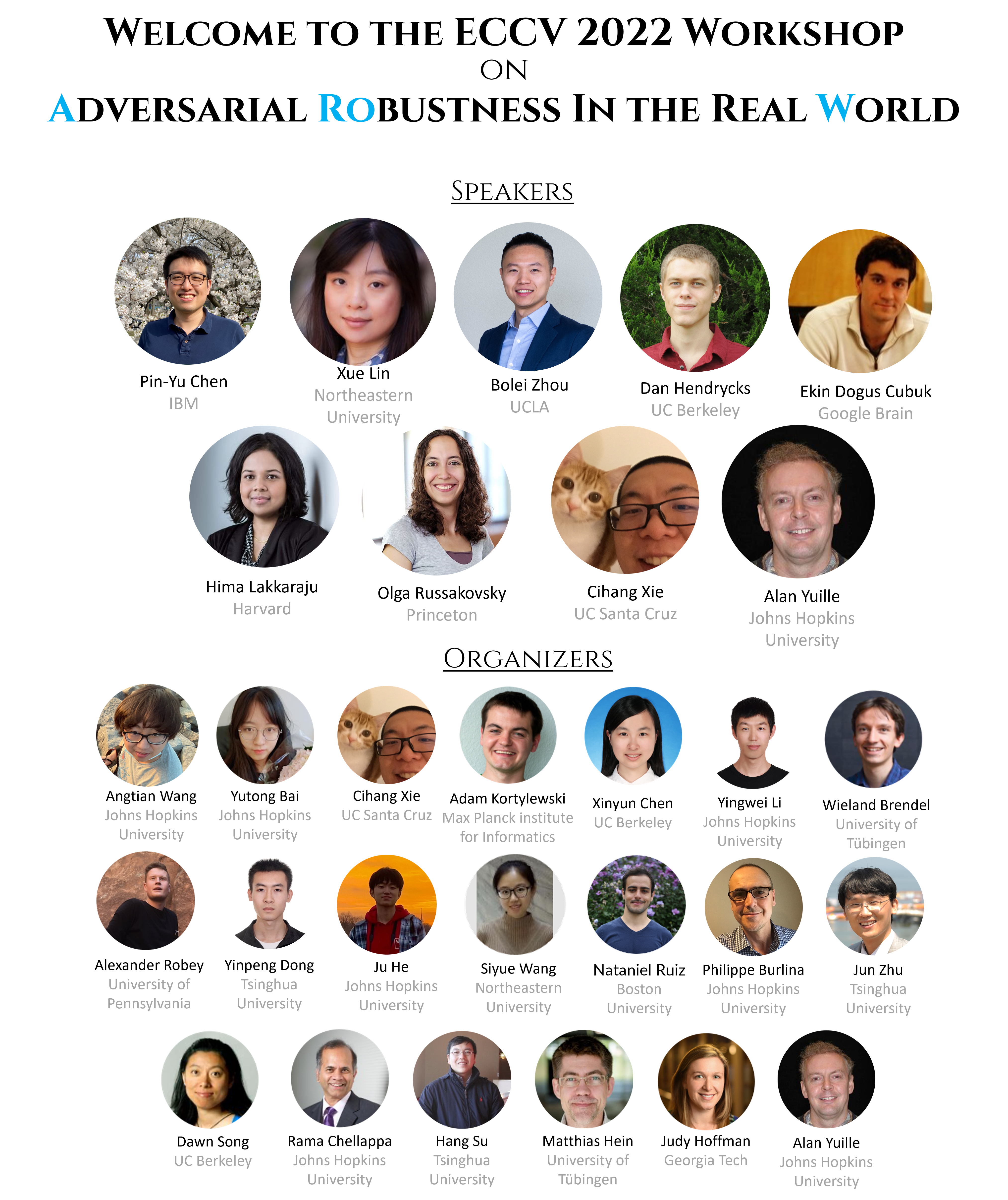

Recent deep-learning-based methods achieve great performance on various vision applications. However, insufficient robustness on adversarial cases limits real-world applications of deep-learning-based methods. AROW workshop aims to explore adversarial examples, as well as, evaluate and improve the adversarial robustness of computer vision systems.
This AROW workshop will be fully virtual.
Topics of AROW workshop include but are not limited to:
Oct. 23, 2022. IST: Israel local time (UTC +2); PST: Pacific Standard Time (UTC -8) Live
Israel Morning Session
Invited Talk: Cihang Xie - CNN vs Transformer: Which One is More Robust - Live
Invited Talk: Olga Russakovsky - Trustworthy and trusted computer vision
Invited Talk: Alan Yuille - Challenging Artificial Intellegence of Vision Algorithm to Achieve Human-Level Performance
Invited Talk: Xue Lin - Evaluation of Deep Learning Robustness and Reverse Engineering of Pertubations
Israel Afternoon Session
Invited Talk: Hima Hlakkaraju - Bringing Order to Chaos: Probing the Disagreement Problem in Explainable AI
Invited Talk: Pin-Yu Chen - Reprogramming Foundation Models with Limited Resources - Live
Invited Talk: Ekin Dogus Cubuk - Adversarial examples of classifiers, physical systems, and beyond - Live
Invited Talk: Bolei Zhou - Benchmarking AI Safety of Autonomous Driving through Diverse Traffic Scenario Generation - Live
Invited Talk: Dan Hendrycks - Beyond the Lp Ball and Long Tails - Live
Best Paper Session - Live
AROW Workshop Best Papers
Best Papers
Uncertainty & Robustness in Deep Learning (Workshop at ICML 2021)
Security and Safety in Machine Learning Systems (Workshop at ICLR 2021)
Generalization beyond the Training Distribution in Brains and Machines (Workshop at ICLR 2021)
1st International Workshop on Adversarial Learning for Multimedia (Workshop at ACM Multimedia 2021)
Please contact Angtian Wang or Yutong Bai if you have questions. The webpage template is by the courtesy of ECCV 2020 Workshop on Adversarial Robustness in the Real World.